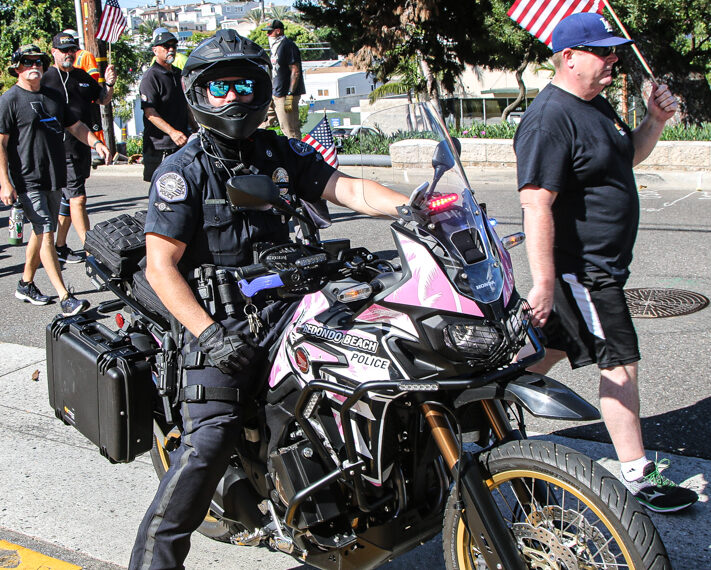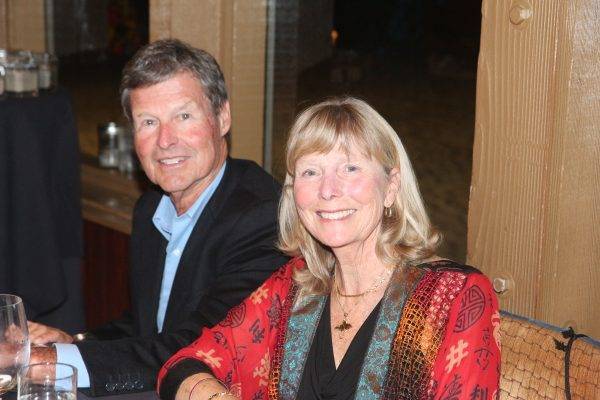by Garth Meyer
City Councilmember Nils Nehrenheim brought a sleeping bag to the proceedings June 20 at city hall. When it was over, near 12:30 a.m., Redondo Beach had a balanced budget of $108 million for fiscal year 2023-24, and the sleeping bag remained in its pouch.
It was the fifth and final public hearing for the budget, followed by subsequent “horse trading” by councilmembers over 77 decision packages – not including fixed costs such as salaries.
The meeting was presided over by Mayor Bill Brand, with input from Interim Fire Chief Pat Butler, Police Chief Joe Hoffman and others.
“Congratulations on passing the budget, a very big deal, well done,” City Manager Mike Witzansky said at the end of the night, “I don’t think we’ve (finished) a budget in the 12:30 hour in some time. Though it may not have felt like it.”
The budget funds a new fire engine, at an estimated $1 million, and two new motorcycle police officers at $215,000 each per year.
$4 million from the Tidelands account went to dredging King Harbor to remove sand and silt buildup and deposit it offshore, and 25 city crossing guard positions were fully paid for.
“There’s something for everyone; public safety, community services, infrastructure,” said Councilman Todd Loewenstein, noting part of the money will help to restore cuts from the pandemic, and other cuts going back to the 2008-11 recession. “It’s a lot of spending but it’s responsible because it was balanced. Public safety was a huge priority.”
Councilman Nehrenheim cast the lone vote dissenting vote.
“We spent a lot of money, and we don’t have a lot of buffer,” he said. “It’s reckless spending. It took us years to build these funds up.”
Five new capital projects were funded – mostly involving building maintenance – taking the city’s capital projects total to $89 million, including $67 million in carryover projects from previous years. (The $108 million figure for the budget only represents the city’s general fund).
“The one group that didn’t get additional support was Public Works,” said Councilman Zein Obagi, Jr.
He noted that the top resident complaint in city surveys this year was drivers (and bicyclists and e-bike riders) disobeying traffic signs.
“Councilmember (Scott) Behrendt and I were deadset that this was going to be the hill we were going to die on,” said Obagi.
New speed radar signs were included in the budget and another message board for use in the “Drive Slow Redondo” campaign.
$65,000 went to updated training for emergency dispatchers, and $1.8 million to help raise city employees salaries’ closer to the median of nearby municipalities.
Public art received attention, too. Obagi, Jr., spearheaded the allocation of existing public art funds for four mural projects; at the new transit center ($150,000), at Big Lots on Aviation Boulevard ($35,000), the Public Works building on Catalina ($60,000) and $125,000 for sculptures in the median of Lilienthal Lane, a less expensive idea arrived at after Councilmember Paige Kaluderovic first suggested native plants.
“We’ve gone through and just spent everything,” Nehrenheim said. “We’re funding projects that staff aren’t going to get to this year, or next year.”
Obagi also championed $125,000 for a terraced garden on Inglewood and Grant Avenue.
$250,000 will go to renovate Franklin Park for general improvements.
The council also directed the city attorney to expand units at the pallet shelter – not necessarily a budget expenditure, and to seek other grants for $203,000 to rent 13 more motel rooms for the homeless.
For the decision to fund the two motorcycle police officers, Councilman Behrendt spoke particularly in support.
“My no. 1 priority, and it’s not even close, is to (pay for) two additional police officers for the city to beef up traffic enforcement, bar none, to protect our neighborhoods, and our streets,” he said, noting what he has heard from constituents. “They’re asking for more (traffic) police.”
The two officers would make for a total of 98 at full staff for the RBPD.
“Putting them in the traffic unit, I’m going to make that a priority,” said Chief Hoffman.
Nehrenheim was opposed to the addition.
“Do we have a phenomenal increase in traffic issues? … We’re overfunding our police department,” he said, noting that state grant programs often fund traffic enforcement. “While we have severely underfunded our fire department for years, and it’s showing.”
The budget also added two full-time members to the fire department; a training captain and a civil emergency preparedness coordinator – along with a deputy fire marshal in a pilot program.
The potential to build a new, indoor police shooting range was also discussed.
It could be funded by a U.S. Air Force grant that would pay 70 percent of an estimated $10 million construction cost. A modular-units version would cost less.
The city had $951,000 in a fund already for this, and the council decided to keep $600,000 in it, and direct city staff to finish the engineering and environmental requirements to apply for the grant at next June’s deadline.
A debate preceded the decision, about whether the shooting range needed to be discussed that night, and whether it would take money from the fire department.
“We depleted a huge fund for the shooting range, but we beat that to death,” said Councilmember Kaluderovic.
The new budget takes effect July 1.
“I think what we did include was necessary and important, but we also need to start focusing on how to grow revenues,” Kaluderovic said. ER









